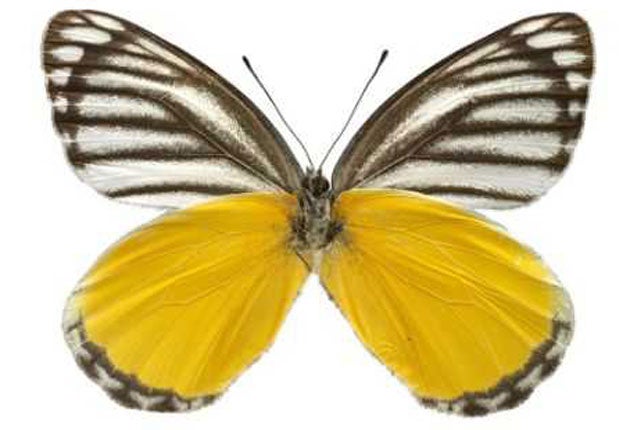Butterflies: Not just a pretty pair of wings
Clive Farrell has been fascinated by butterflies since boyhood. He explains why his conservation project for these vibrant creatures carries an urgent message

My passion for butterflies began when I was six year-old boy growing up in Southampton. When I spotted an extremely hairy caterpillar called a woolly bear crawling across the garden path, like thousands of children before me, I picked it up and put it in a matchbox. I followed its progress as it spun a cocoon and turned into a pupa. On another occasion, I happened to be watching as a beautiful, crimson-and-black tiger moth hatched and dried its wings. I have a theory that we all have magic moments as children. As adults, we then try to rediscover that sense of undiluted happiness. It's something that I'm now trying to do on an enormous scale.
Butterfly World is the mother of all butterfly exhibitions – the biggest in the world and a £27m project I have been working on for the past 15 years; that childhood fascination with nature went on to take over my life. After a brief career as a solicitor, when I lived in a London bedsit with a Burmese cat and a cage full of giant silk moths, I escaped back to the countryside to devote myself to butterflies. With money I'd earned from dealings in property, I went on to open six butterfly exhibitions. I also have a butterfly farm in Belize. But Butterfly World has been the real dream. On a once-hostile 27-acre site scarred by two of our biggest motorways near St Albans in Hertfordshire, we have turned back the clock to create an oasis of wildflower meadows, inspiring gardens and, next year, a glass biome seven times the size of Stonehenge.
This Thursday, David Bellamy will join me to open the second phase of Butterfly World, which first opened its doors last June. Throughout the summer, visitors will be able to walk around our giant lake made in the shape of a chrysalis, and amble through one of a dozen gardens, including three conceived by the celebrated designer, Ivan Hicks. Like me, he has the imagination of a child. In one garden, we reduce visitors to the size of insects with the world's biggest flowerpot, which is visible from the M1, and a biologically-accurate ant the size of a Bentley. To the average child a garden is deeply boring but we aim first to amaze and entertain. The education follows from there.
Butterflies are a symbol of freedom but, fragile, harmless and beautiful, they are also under threat. In Britain, there are only 60 species left and many of those are on the brink of extinction. They are the canaries in the coalmine of our environment. If there are habitats for butterflies, free from pollution or undue quantities of fertiliser, which bully out the nectar plants on which the insects depend, then other animals follow. I created the gardens at my home in Dorset as butterfly habitats, but they are now also home to one of the area's finest collections of birds and are a haven for the endangered great crested newt. I want to inspire and educate people and local authorities to make their gardens, parks and even road verges friendlier for butterflies. Get it right for them, you get it right for nearly everything. Get it wrong, butterflies are the first to disappear.
When it's complete next year, Butterfly World will resemble a giant butterfly's head from the air. My giant biome will form the eye and will house a crumbling lost Mayan civilisation linked by a jungle canopy walkway. Inspired by the ancient Mayan pyramids near my farm in Belize, it will be home to dozens of tropical species, with plants sprouting from every crevice. The Blue Morpho, a vision in iridescent blue and as big as a man's hand, will be the belles of the ball, but it is just one of thousands of species of tropical butterfly. Many, sadly, are as threatened as some of the species native to Britain. I see tropical butterflies as messengers from the rainforests who come with a warning about the destruction of their ecosystems. Butterflies haven't survived for thousands of years without the ability to bounce back but you've got to provide the right habitat. Build it and they will come.
Interview by Simon Usborne. For more information about Butterfly World, go to Butterflyworldproject.com; to learn more about Clive Farrell's butterfly garden in Dorset, read an interview at Independent.co.uk/farrell
Join our commenting forum
Join thought-provoking conversations, follow other Independent readers and see their replies
Comments